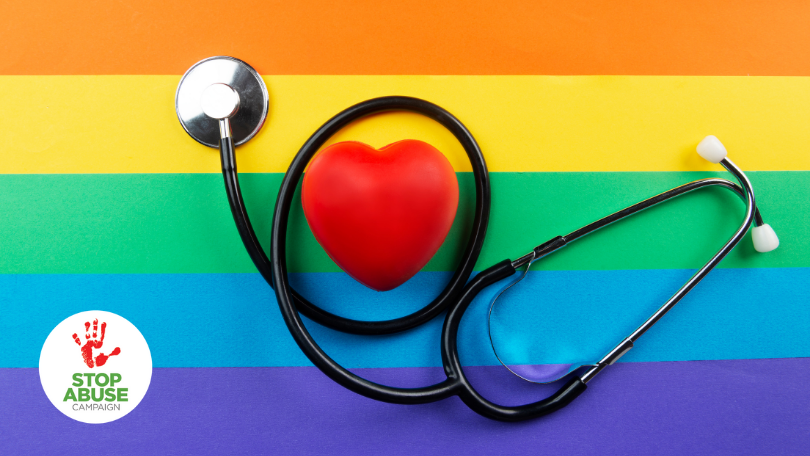Every June, we start seeing company logos transform into rainbows, and “Happy Pride Month” social posts fill up our feeds.
There is so much love and joy to celebrate in the LGBTQ community, and the world is becoming a better and more supportive place for LGBTQ youth.
However, society still mistreats and stigmatizes the LGBTQ community, putting LGBTQ youth at increased risk of suicide. In this article, we’d like to address the topic of suicide among LGBTQ youth, its risks and prevention.
What is LGBTQ?
LGBTQ stands for lesbian, gay, bisexual, transgender, and queer. While the term “queer” was used as a slur in the past, the LGBTQ community has reclaimed the term, and it is now an all-encompassing term of empowerment for people who aren’t heterosexual or gender-conforming.
What percentage of the population is LGBTQ?
A recent study by Gallup showed that, in 2021, 7.1% of the adult population in the US identified as LGBTQ, up by 1.5% since 2020.
The Gallup study also showed that one in five or roughly 21% of Gen Z adults (born between 1997 and 2003) identify as LGBTQ. Based on these trends, we will likely see an even higher rate as the younger Gen Z’s reach adulthood.
LGBTQ youth in America
While there is no central source of truth for the number of LGBTQ youth in the US, The Williams Institute has estimated between 9-11% of American youth identify as LGBTQ.
LGBTQ mental health
LGBTQ youth are at significant risk for Adverse Childhood Experiences (ACEs), including abuse and neglect, which negatively impact their mental health.
Youth LGBTQ problems in society include family rejection, homelessness, discrimination, bullying, and harmful “conversion therapy” practices. Bisexual youth report higher rates of depressed mood, bullying, sexual assault, and physical harm.
According to the CDC-Kaiser study, ACEs can cause disrupted neurodevelopment and social, emotional, and cognitive impairment. This can lead to severe mental health issues, crime, homelessness, and many of the leading causes of death, including cancer, heart disease, and increased rates of suicide among LGBTQ youth.
Mental health of transgender youth
The Trevor Project found that when it comes to transgender mental health and non-binary mental health, these youth face an elevated risk for depression and suicidality compared to youth who are cisgender and straight.
Transgender and non-binary youth are up to 2.5 times more likely to experience depression and consider suicide than their cisgender LGBTQ peers.
Suicide among LGBTQ youth
Are LGBTQ youth more likely to commit suicide?
The answer is a resounding yes. When you look at the numbers, LGBTQ youth suicide rates are hard to swallow.
According to The Trevor Project, LGBTQ youth are more than four times as likely to attempt suicide than their cisgender and heterosexual peers. Each year, more than 1.8 million LGBTQ youth seriously consider suicide—and at least one attempts suicide every 45 seconds.
What percent of trans people commit suicide?
Suicide rates among LGBTQ youth are shocking and require our immediate attention. More than half of transgender and non-binary youth seriously consider committing suicide every year, and 20% of them attempt it.
Factors that contribute to suicide among LGBTQ youth
Why is suicide so high among LGBTQ youth? Imagine your family wonders —is being gay a mental disorder? Imagine facing neglect, abuse, and ridicule in your own community, where you long to be safe and included. Imagine you additionally have other compounding risk factors, such as race and socioeconomic status.
Here are some factors that affect mental illness in the LGBTQ community, and contribute to suicidality, according to The Trevor Project:
- Transgender people in the US fear retaliation and other trauma due to their gender identity—73% of LGBTQ youth report having experienced discrimination,
- Sexual abuse rates among transgender people are over 50%,
- Physical abuse rates are over 40%,
- Barriers to general healthcare, as well as gender-affirming healthcare,
- In particular, Black transgender and non-binary youth report disproportionate rates of suicide risk—with 59% seriously considering suicide and more than 1 in 4 (26%) attempting suicide in the past year,
- Youth who underwent conversion therapy were more than twice as likely to attempt suicide multiple times.
Transgender family rejection statistics
LGBTQ homelessness can directly result from transgender youth being rejected by their family. Not only may these young people experience coming out depression, but they may find themselves without family or community support or a place to live. Unfortunately, one of the outcomes of LGBTQ youth homelessness includes suicide.
⅓ of LGBTQ youth report experiencing parental rejection, and another ⅓ don’t come out to their families until they’re adults. This leaves ⅔ of LGBTQ youth without any family support.
When it comes to suicide among LGBTQ youth, those rejected by their parents are eight times more likely to attempt suicide and six times more likely to be depressed.
Suicide prevention: LGBTQ youth
If what we’ve just discussed moved you and you’re wondering how you can contribute to LGBTQ youth suicide prevention, here are some suggestions:
- The most important thing is SUPPORT! The Trevor Project notes that having just one accepting adult can reduce the risk of LGBTQ youth suicide by 40%,
- Advocate for LGBTQ affirming spaces and activities, especially at schools,
- Respect pronouns. Transgender and non-binary youth who have their pronouns respected attempt suicide at half the rate of those who do not have their pronouns respected,
- Advocate for gender-affirming healthcare for LGBTQ youth. Gender-affirming medical care has many positive mental health outcomes, including lowered suicidality.
Previous attempts to solve LGBTQ mental health crisis
Many amazing organizations are hard at work to solve the LGBTQ mental health crisis. Here are a few worth checking out:
Trans family support services
Both The Trevor Project and Trans Family Support Services have resources for parents of LGBTQ youth and the whole family.
Here, you can connect to a crisis counselor 24/7, 365 days a year, anywhere in the US. It is 100% confidential and 100% free.
You can help prevent trauma and suicide among LGBTQ youth. Learn how by subscribing to our newsletter and supporting our work. Read about the ten categories of ACEs by following our blog. Do you know your ACE score? Take the ACE test here.
Do you know your score?
Discover your ACE score and unlock a new understanding of your life. Take the test and gain insights into how your early experiences shape your well-being. Don't let your past define you – empower yourself with knowledge.

Gem Garcin
Brand Specialist & Social Justice Enthusiast
Gem's career began in criminal justice reform, supporting young people with trauma and ACEs. Now Gem melds a passion for parenting, antiracism, social justice, leadership, and storytelling as a marketing and brand specialist, with a focus on inclusivity.
